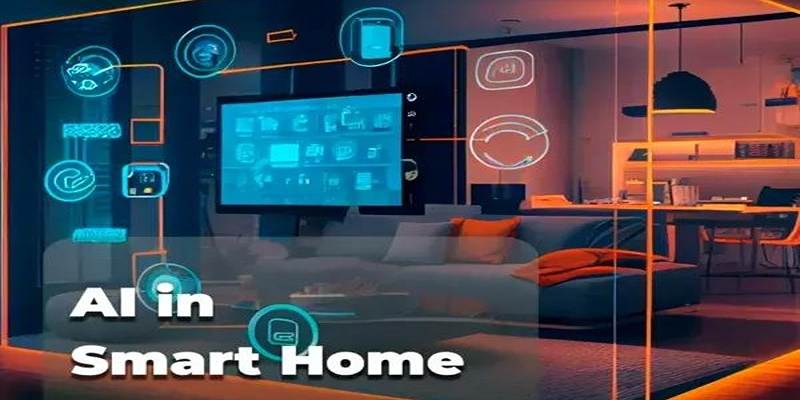Have you ever received a high electricity bill and wondered where all that power went? You're not alone. Many people want to reduce their energy usage, save money, and make eco-friendly choices—but they don't always know how. That’s where AI in energy management steps in.
By using smart technology, you can control and monitor your home's energy use in real-time, automatically adjusting to your needs. This post will explore how artificial intelligence is changing the way you manage energy at home, what benefits it brings, and how you can start using these smart solutions in your everyday life.
What Is AI-Powered Home Energy Management?
AI-powered home energy management refers to the use of artificial intelligence to monitor, analyze, and control the energy usage within a home. It involves the integration of smart sensors, connected devices, and machine learning algorithms that work together to create a responsive and optimized energy system.
Instead of relying on fixed schedules or manual input, AI systems learn from users' behavior, preferences, and even weather conditions to make real-time decisions. It leads to better energy efficiency and reduces unnecessary consumption without compromising comfort.
How AI Works in a Home Environment

AI works with things like lights, appliances, thermostats, and power meters in a smart house. These gadgets are always gathering information, which the AI system uses to figure out how they are being used and make smart choices.
For instance, if the system learns that a household tends to be empty during weekday mornings, it can automatically reduce heating or cooling during that time. When family members are on their way home, the system can then reactivate the necessary appliances or adjust the indoor temperature to optimal levels. This dynamic decision-making process allows for maximum comfort and efficiency while minimizing energy waste.
Benefits of Smart AI-Based Energy Management Systems
AI-based energy management systems bring a wide range of benefits to homeowners. From cost savings to convenience, these systems are designed to offer value in multiple ways:
- Energy Savings: AI identifies energy-wasting patterns and automatically adjusts settings to reduce consumption.
- Lower Bills: By optimizing energy usage, AI systems help homeowners reduce monthly utility expenses.
- Enhanced Comfort: Smart thermostats and lighting adapt to personal routines and preferences.
- Environmental Benefits: Reduced energy use translates to lower carbon emissions, supporting sustainable living.
- Real-Time Monitoring: Homeowners receive detailed insights about their energy use and suggestions for improvement.
- Remote Control: Systems can be managed via smartphone apps, allowing users to control energy even when away from home.
Examples of AI Devices Used in Home Energy Management
Many popular smart home devices use AI to manage energy more intelligently. These devices are designed to integrate seamlessly into existing home setups and improve overall efficiency.
Some of the most common AI-driven devices include:
- Smart Thermostats (e.g., Nest, Ecobee): These learn heating and cooling habits and make adjustments automatically.
- Smart Plugs and Power Strips: These monitor and control the power usage of connected devices.
- AI Energy Monitors: Devices like Sense track energy use across the home and provide actionable insights.
- Smart Lighting Systems: These adjust brightness and timing based on presence detection or natural light levels.
- Home Batteries and Inverters: AI decides when to store or release energy from solar panels or batteries.
These systems not only provide convenience but also play a key role in achieving long-term savings.
Role of AI in Renewable Energy Integration
AI is especially valuable in homes that use renewable energy sources such as solar panels. These homes often face the challenge of managing variable energy generation due to changing weather conditions. AI solves this problem by balancing power consumption storage and even selling excess power back to the grid.
Key benefits of AI in renewable integration include:
- Maximizing Solar Power Usage: AI tracks solar generation and schedules high-energy tasks during peak production.
- Battery Management: AI decides when to charge or discharge home batteries based on energy demand and utility rates.
- Grid Interaction: Some systems automatically feed surplus energy to the power grid during high-yield hours.
- Forecasting: AI predicts solar output by analyzing weather forecasts, allowing better planning and usage.
This intelligent control ensures that homes use cleaner energy more effectively, making renewables more practical for everyday use.
How to Start Using AI for Home Energy Management

For those new to AI-powered systems, getting started is easier than ever. Many solutions are designed to be plug-and-play, with minimal setup required.
Here’s a simple step-by-step process to begin:
- Step 1: Identify Energy Needs
Assess which areas of the home consume the most energy—typically heating, cooling, and major appliances. - Step 2: Choose Smart Devices
Start with a smart thermostat or energy monitor, which can deliver immediate improvements. - Step 3: Connect to a Hub or App
Most AI systems come with mobile apps that allow real-time control and insights. - Step 4: Allow Time for Learning
Let the system collect data over a few weeks. It will begin optimizing automatically. - Step 5: Monitor and Adjust
Check the app for reports, savings suggestions, and new features.
Smart devices are also becoming more affordable, allowing a wider range of homeowners to access these benefits.
Conclusion
AI in home energy management is more than just a smart upgrade—it’s a practical solution for modern living. From reducing bills to improving comfort and contributing to environmental goals, these systems offer real value to consumers. As awareness and availability grow, AI-powered energy solutions are set to become the standard in every household. Whether starting with a single, smart device or embracing a fully connected home, now is the perfect time for homeowners to explore what AI can do for their energy needs.



